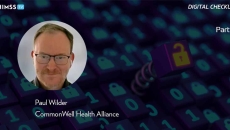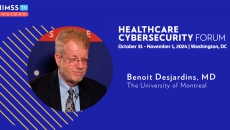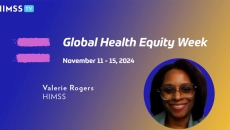HIMSS TV
Achieving FHIR at scale will come about as other industry standards have done, through usage and/or government intervention, says Paul Wilder, director of CommonWell Health Alliance.
FHIR at scale awaits trusted scale exchange, but the building blocks and capability are there, says Paul Wilder, director of CommonWell Health Alliance.
Oklahoma Heart Hospital went digital 22 years ago, a move that coordinated the EHR between the hospitals and the clinics for unified care and a better patient experience, says Oklahoma Heart Hospital CIO David Miles.
Oklahoma Heart Hospital, a two-hospital physician-owned cardiovascular system, went all digital in 2002 to focus on workflow, not paper shuffling, says CIO David Miles.
Artificial intelligence makes efficient use of a massive amount of data, but it can also create deep fake technology, says Dr. Benoit Desjardins, professor of radiology at the University of Montreal.
New York State is mandating more stringent cybersecurity processes. Other states and the federal government may soon release similar regulations, says George Pappas, healthcare cybersecurity expert and CEO of Intraprise Health.
One issue is that half of medical devices haven't been trained on real patient data during clinical validation, says Dr. Jay Anders, chief medical officer at Medicomp Systems.
Patients need a safe, effective operational hospital that can ensure access to their data, says Lee Kim, senior principal for cybersecurity and privacy at HIMSS.
One of the biggest barriers in using AI clinical algorithms to reduce health disparities is the need for representative data sets, says Dr. Keisuke Nakagawa, director of innovation at UC Davis Health and co-chair of the HIMSS SDOH Committee.
Leveraging data across the spectrum of care can improve maternal health outcomes and help lift this country’s high mortality and morbidity rates, says Valerie Rogers, senior director of government relations at HIMSS.









